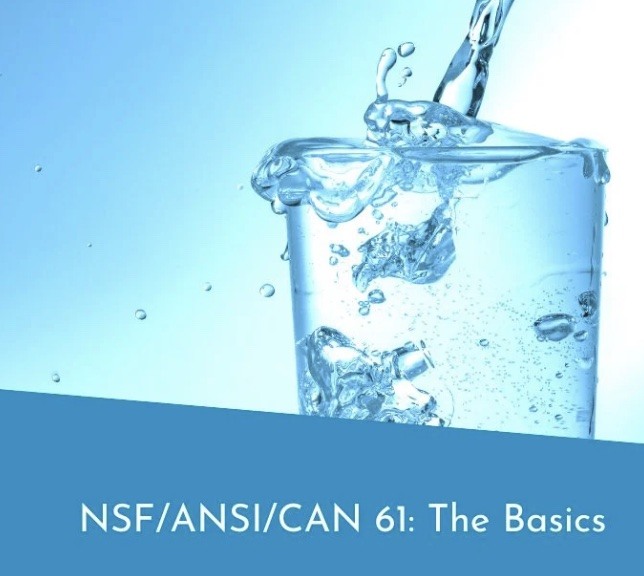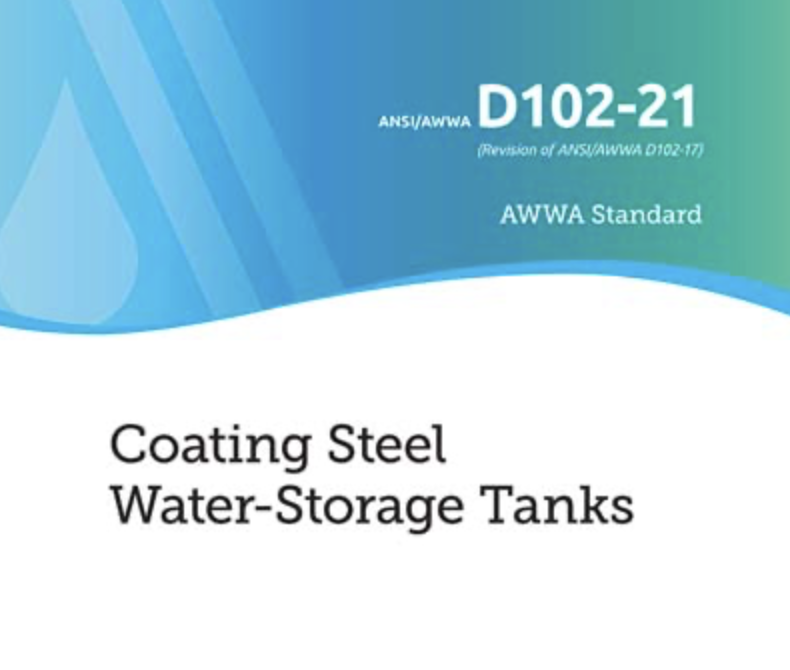
NSF-Approved Coatings for Potable Water Tanks
Ensuring the safety and longevity of potable water tanks with NSF-approved coatings adhering to AWWA D102 standards.
- Rick Gilbreath
NSF-APPROVED COATINGS FOR POTABLE WATER TANKS
Ensuring the safety and longevity of potable water tanks with NSF-approved coatings adhering to AWWA D102 standards.
The Importance of NSF-Approved Coatings for Potable Water Tanks
Potable water tanks are essential infrastructure components that play a vital role in ensuring the delivery of clean and safe drinking water to communities across the globe. These tanks serve as reservoirs that store water, which is then distributed to households, businesses, and public facilities. To maintain the purity and safety of the water stored within these tanks, it is imperative that the interior surfaces are coated with high-quality, NSF-approved coatings, like those manufactured by Tnemec Company. These specialized coatings act as a protective barrier, preventing harmful substances such as chemicals, heavy metals, and other contaminants from leaching into the water supply. By doing so, they safeguard public health by ensuring that the water remains uncontaminated and safe for human consumption.
Moreover, the use of NSF-approved coatings is not only about maintaining water quality but also about enhancing the durability and longevity of the water tanks themselves. These coatings provide a robust defense against various forms of deterioration, including corrosion, which can occur due to constant exposure to water and environmental factors. They also inhibit microbial growth, which can lead to biofilm formation and potential health hazards. By protecting the tanks from such damage, these coatings significantly reduce the need for frequent repairs and maintenance, thereby lowering operational costs for water utilities. Additionally, by ensuring the structural integrity of the tanks, they help guarantee a consistent and reliable supply of safe drinking water, which is crucial for the well-being and development of communities.
Understanding AWWA D102 Standards
The American Water Works Association (AWWA) D102 standard provides comprehensive and detailed guidelines specifically designed for the coating of steel water storage tanks, which are critical components in the infrastructure of water supply systems. This standard meticulously outlines the requirements for several key processes, including surface preparation, coating application, inspection, and ongoing maintenance. Each of these processes is crucial to ensure that the coatings applied to the tanks provide long-term protection against various forms of degradation and meet stringent safety standards. Surface preparation involves cleaning and preparing the tank surfaces to ensure optimal adhesion of the coatings, which is vital for their effectiveness. Coating application must be performed with precision to create a uniform protective layer that can withstand environmental and operational stresses. Regular inspection and maintenance are necessary to identify and address any potential issues before they compromise the tank's integrity.
AWWA D102 is essential for ensuring that potable water tanks are coated in a manner that not only prevents contamination but also maintains the structural integrity of the tanks over time. By adhering to these standards, municipalities and water utilities can effectively safeguard public health by providing safe drinking water. Additionally, compliance with AWWA D102 helps extend the service life of their infrastructure, reducing the frequency and cost of repairs and replacements. This, in turn, contributes to the efficient and sustainable management of water resources, ensuring that communities have access to a reliable supply of clean water for years to come.
What is NSF-600 and Why It Matters
NSF-600 refers to the NSF/ANSI Standard 600, a comprehensive set of guidelines that establishes the stringent requirements for the chemical safety of products used in the treatment of drinking water. The NSF-600 standard encompasses a wide range of criteria, including the permissible levels of various chemical compounds and the methods for testing and verifying compliance. By adhering to these standards, manufacturers and water utilities can ensure that their coatings are not only effective in protecting the water tanks but also safe for the environment and public health. By complying with NSF-600, manufacturers and water utilities can be confident that their coatings are safe, reliable, and effective for use in potable water applications, thereby contributing to the overall safety and quality of the drinking water provided to communities.
Latest Changes to NSF-600: What You Need to Know
The latest changes to NSF-600 have introduced stricter limits on the levels of certain chemicals that can be present in potable water coatings, reflecting a significant shift towards more rigorous safety standards. These updates are grounded in the most recent scientific research, which has provided new insights into the potential health risks associated with chemical exposure from water tank coatings. By incorporating these findings, the revised standards aim to offer even greater protection for public health, ensuring that the water supply remains free from harmful contaminants.
For water utilities and tank manufacturers, staying informed about these updates is crucial to ensure compliance with the new standards and to maintain the highest safety standards. This involves not only understanding the specific chemical limits set by the revised NSF-600 but also implementing best practices in the selection and application of coatings. By doing so, they can effectively protect their infrastructure and the communities they serve, ensuring that the delivery of safe and clean drinking water remains uninterrupted. Additionally, these changes may necessitate adjustments in manufacturing processes and quality control measures to meet the new requirements, highlighting the importance of ongoing education and adaptation in the industry.
Choosing the Right Coating for Your Potable Water Tank
Selecting the appropriate coating for a potable water tank is a critical decision that involves a comprehensive evaluation of several key factors. First and foremost, the material of the tank itself must be considered, as different materials may require specific types of coatings to ensure optimal adhesion and protection. For instance, steel tanks might need coatings that offer superior corrosion resistance, while concrete tanks may require coatings that prevent water seepage and structural degradation. Additionally, the environmental conditions to which the tank will be exposed play a significant role in the selection process. Factors such as temperature fluctuations, humidity levels, and exposure to UV radiation can all impact the performance and longevity of the coating, necessitating the choice of a product that can withstand these challenges.
Furthermore, the specific requirements and operational needs of the water utility must be taken into account. This includes understanding the volume of water the tank will store, the frequency of water turnover, and any unique chemical treatments the water may undergo. It is essential to choose coatings that are not only NSF-approved but also fully compliant with both AWWA D102 and NSF-600 standards, ensuring they meet the highest safety and performance criteria.
Regular inspection and maintenance of the coatings are crucial to ensure their long-term effectiveness and safety. This involves routine checks for signs of wear, damage, or degradation, and timely reapplication or repair of the coatings as needed. By choosing the right coating and maintaining it properly, water utilities can effectively protect their infrastructure, minimize the risk of contamination, and ensure the consistent delivery of safe and clean drinking water to their communities, thereby upholding public health and safety.
To make an informed decision, it is highly advisable to consult with us here at High Performance Coatings. We can provide valuable insights and recommendations based on our over 200 years of combined expertise and experience. We can offer guidance on the latest coating technologies and help identify products that best match the specific needs of the water utility.

How to Meet AWWA D102 Water Tank Coating Standards
HOW TO MEET AWWA D102 WATER TANK COATING STANDARDS

Interior Immersion Grade Coatings: Protecting...
Ensuring the longevity and safety of potable...

Custom Coating Solutions for Your Water Tank
CUSTOM COATING SOLUTIONS FOR YOUR WATER TANK
...